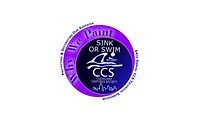Organizers of Sink or Swim Symposium Issue Call For Papers

CLEVELAND — The Cleveland Coatings Society is issuing a call for papers for the Sink or Swim Technical Symposium, which takes place June 2-3, 2020.
This year the Cleveland Society set out to answer a very basic question relevant to the coatings industry: why do we paint? The answer is both simple and complex. There are many responses, from protecting our surfaces and infrastructure to beautifying our surroundings by decorating those surfaces. This year, the Sink or Swim Technical Symposium is soliciting papers that will help industry professionals to accomplish these objectives. As in years past, the symposium will feature three sessions, which this year will center on the substrates. These substrates include wood, concrete, metals and plastics. Industry professionals are invited to submit their best solutions for protecting and decorating these substrates. Any aspect of coatings technology is fair game, as long as it helps explore the answer to how we protect and decorate our surfaces and substrates, i.e., why we paint.
Wood is an ancient substrate, and many types of coatings have been developed to protect it. State, local and government regulations continue to be a driving force in what can and can’t be used to accomplish this goal. New variations on wood types and wood composites lead to different needs, and new solutions must be found for improved durability and higher performance. Papers sharing these solutions would be welcomed at the 63rd annual symposium. The following are a few suggested topics, but organizers gladly welcome others that may be of interest to the industry: new waterborne resin technologies, preventing microbial attack, improving scrubability, reducing VOCs, eliminating odors, stain blocking, compliance and sustainability, analytical methods, pigments, novel technologies, and smart coatings.
Demand for high-performance coatings for steel and other metals continues to grow. The only caveat is that they need to be compliant with all state, local and global regulations. This has opened up tremendous opportunities for the industry. What new resin technologies, pigment systems and specialty additives will be required to improve long-term durability and performance? Consider submitting an abstract in the following areas of protecting and coating metal substrates: greener/higher solids formulations, waterborne and solventborne, epoxy and urethane coatings, corrosion/oxidation protection, novel polymer technologies, pigment requirements, accelerated testing protocols, environmental stewardship, formulation techniques/DOE, high-performance additives, and market research and trends.
Cementitious substrates, one of the oldest engineered substrates, are still in wide use, with newer performance enhancements, including transparency and air scrubbing capabilities. Coatings and sealers that allow this substrate to last are essential. Substrates include: plaster stucco, cement and concrete, both precast and cast-in-place. Possible paper topics include waterborne/compliant technologies, novel polymer technologies, pigment requirements, high-performance additives, market research and trends, reducing VOCs and eliminating odors, stain blocking, and breathable coatings.
Engineered plastics are everywhere. The automotive industry has had to deal with coating this substrate for years, but as the use of plastic expands into our everyday lives, so to must the need to find cost-effective ways to coat plastics. Plasma pretreatment may not be a solution to improve adhesion. Organizers are encouraging industry professionals to submit papers describing techniques to coat, protect and beautify this difficult substrate. Topics include high-performance additives, novel polymer technologies, pigments, novel technologies, smart coatings, and market research and trends.
The deadline for abstract submission is Feb. 29, 2020. Learn more here.
Looking for a reprint of this article?
From high-res PDFs to custom plaques, order your copy today!







